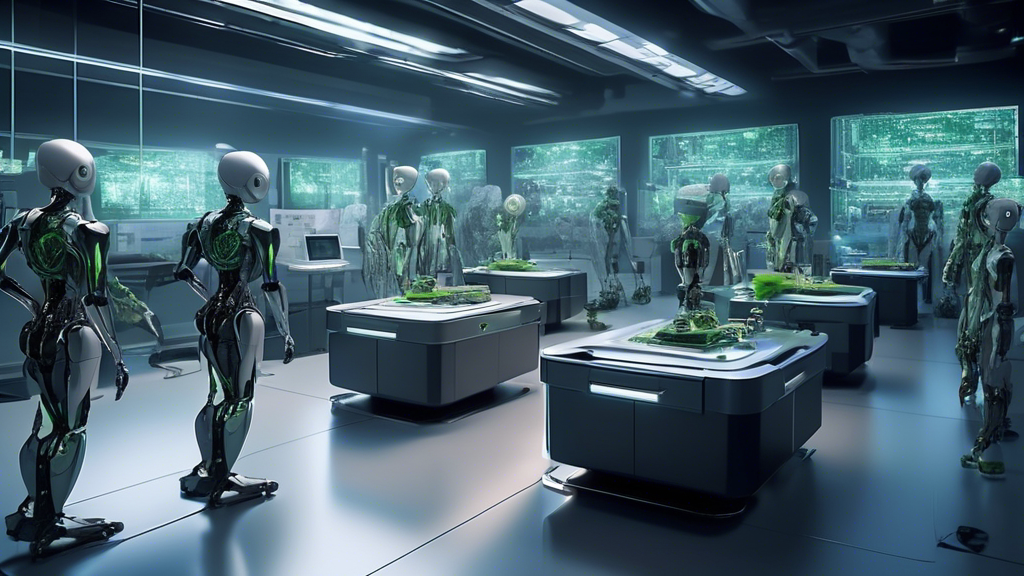NVIDIA’s Role in Boosting Generative AI
NVIDIA’s Role in Boosting Generative AI
In the rapid evolution of artificial intelligence (AI), particularly in the realm of generative AI, NVIDIA has emerged as a pivotal player. The company, widely recognized for its graphics processing units (GPUs), has transcended its gaming roots to become a cornerstone in the AI and deep learning industries. NVIDIA’s contributions have been crucial in accelerating the capabilities and applications of generative AI, a subset of AI focused on generating new content ranging from images and text to complex simulations. This article explores how NVIDIA has been instrumental in advancing generative AI technologies.
Providing the Foundation with Advanced GPUs
At the heart of NVIDIA’s influence on generative AI is its development of highly advanced GPUs. These GPUs offer the computational power necessary for the intensive workloads of training deep learning models, including those used in generative AI. NVIDIA’s architecture, specifically designed for parallel processing, significantly speeds up the training times for these models, making it feasible to iterate and improve them more rapidly. This capability has not only enabled researchers to push the boundaries of what’s possible with generative AI but has also democratized access to these technologies by making them more time and cost-efficient.
Creating Development Ecosystems
NVIDIA has also played a critical role in fostering generative AI through the creation of development ecosystems. One notable example is CUDA, NVIDIA’s parallel computing platform and programming model, which has become integral to accelerating compute-intensive applications. By enabling direct access to the GPU’s virtual instruction set and parallel computational elements, CUDA allows developers to significantly optimize their AI models. Furthermore, NVIDIA’s software development kits (SDKs) and tools like the NVIDIA Deep Learning AI and TensorRT have provided developers with the resources needed to efficiently implement, train, and deploy AI models, including those focused on generative tasks.
Empowering Cutting-Edge Research
NVIDIA’s technology and resources have been at the forefront of major breakthroughs in generative AI. Universities, research institutions, and tech companies have leveraged NVIDIA’s GPUs and development tools to push forward with innovative projects in areas such as natural language processing, computer vision, and synthetic data generation. Generative adversarial networks (GANs), which have been responsible for some of the most talked-about advances in AI, including deep fakes and sophisticated image and video generation, operate on the computational backbone provided by NVIDIA’s hardware.
Transforming Industries
Generative AI applications powered by NVIDIA are transforming various industries by enabling new levels of creativity and efficiency. In entertainment, NVIDIA’s technology aids in the creation of realistic animations and special effects. In the automotive industry, it’s being used for the simulation and design of new vehicle models. Healthcare benefits from enhanced drug discovery processes, and in architecture, NVIDIA facilitates the generative design, where AI suggests optimizations for structures and materials. This wide array of applications underscores NVIDIA’s role in not just advancing the technology behind generative AI, but in helping to apply it in practical, innovative ways across the global economy.
Looking Towards the Future
As generative AI continues to evolve, NVIDIA’s ongoing innovation in both hardware and software will likely play a key role in shaping its trajectory. The company’s commitment to pushing the envelope in AI performance, accessibility, and efficiency positions it as a linchpin in the future development of generative AI technologies. Whether through the introduction of more powerful GPUs, further enhancements to its development ecosystems, or collaborations with leading researchers and institutions, NVIDIA is set to continue its crucial support for the expanding possibilities of generative AI.
editor's pick
news via inbox
Nulla turp dis cursus. Integer liberos euismod pretium faucibua

